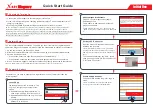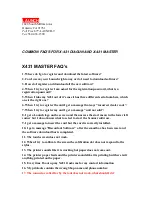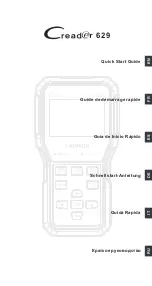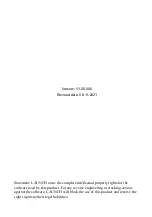
Safety Information
1-2
User’s Manual
•
Do not allow a patient to remain connected to the ventilator when ventilation is stopped,
because a substantial quantity of exhalation gas, primarily carbon dioxide, may be inhaled by
the patient. In some circumstances, inhaling carbon dioxide may lead to under-ventilation,
suffocation, and serious injury or death.
•
The ventilator must not be used with flammable anesthetic substances.
•
Do not start ventilation until you ensure that the device is suitably assembled, that the air inlet
filter is properly installed and is not obstructed, and that there is proper clearance all around the
unit. Also ensure that the patient circuit is suitably connected to both the ventilator and the
patient and that the patient circuit, including all hoses, is not damaged or obstructed.
•
A ventilator-dependent patient should always be monitored by trained and competent medical
personnel. Ensure that the patient’s caregiver is able and prepared to take suitable action in the
event the ventilator identifies an alarmed condition or experiences a problem.
•
Do not use a patient circuit with a leak accessory for ventilator-dependent patients.
•
Before dispensing the ventilator to caregivers or the patient for home use, ensure the Locking
Key
is activated so that critical ventilator settings are not modified.
•
Do not perform ventilator alarm tests while the patient is connected to the ventilator. Provide
the patient with an alternate means of ventilation before conducting these tests.
•
Verify the functionality of the alarm conditions before connecting the patient to the ventilator.
•
If the ventilator fails the alarm tests or if you cannot complete the tests, refer to chapter
3,
“Troubleshooting”
or call your equipment supplier or Covidien.
•
When an alarm condition is triggered, or there is evidence of a patient-ventilator fault or
problem, examine the patient first before examining the ventilator.
•
A continuous alarm condition will be activated if the ventilator power switch is turned off while
ventilation is in progress. When the power switch is turned back on again, ventilation will
resume without having to press the VENTILATION ON/OFF button.
•
To reduce the risk of infection, wash your hands thoroughly before and after handling the
ventilator or its accessories.
•
A patient treated by mechanical ventilation is highly vulnerable to the risks of infection. Dirty or
contaminated equipment is a potential source of infection. Clean the ventilator and its
accessories regularly and systematically before and after each use and following any
maintenance procedure to reduce the risks of infection. The use of a bacterial filter at the
ventilator’s outlet—or both ports if a double-limb circuit is used—is recommended. Refer to
chapter
7, “Cleaning”
.
•
Handle the ventilator with care during and after use, particularly when ambient temperatures
are high. Some ventilator surfaces may become hot, even if safety specifications are not
exceeded.
Warnings Regarding Installation and Environment of Use
•
Even though the Puritan Bennett™ 560 Ventilator meets current safety standards, the internal
Lithium-ion battery of the device exceeds the 100Wh threshold and is therefore considered to be
Dangerous Goods (DG) Class 9 – Miscellaneous, when transported in commerce. As such, the
Puritan Bennett™ 560 Ventilator and/or the associated Lithium-ion battery are subject to strict
transport conditions under the Dangerous Goods Regulation for air transport (IATA: International
Air Transport Association), International Maritime Dangerous Goods code for sea and the
European Agreement concerning the International Carriage of Dangerous Goods by Road (ADR)
for Europe. Private individuals who transport the device are excluded from these regulations
although for air transport some requirements apply. For air transport; the Puritan Bennett™ 560
Ventilator is permitted as checked-in or carry-on baggage. Two spare batteries per person may be
taken on board as carry-on luggage only, with the prior approval of the airline. This classification
and regulatory requirements may vary depending upon the country and mode of transport.
Therefore it is recommended that users verify with the carrier / airline as to which measures to
take before the voyage.
Содержание Puritan Bennett 560
Страница 1: ...User s Manual Puritan Bennett 560 Ventilator TM...
Страница 6: ...This page intentionally blank iv User s Manual...
Страница 10: ...viii User s Manual This page is intentionally blank...
Страница 14: ...4 User s Manual This page is intentionally blank...
Страница 32: ...Safety Information 1 18 User s Manual Figure 1 4 Location of Labels Bottom View 7 13 1 4 3...
Страница 98: ...5 10 User s Manual This page is intentionally blank...
Страница 128: ...C 2 User s Manual This page is intentionally blank...
Страница 130: ...Unpacking and Preparation D 2 User s Manual Figure D 1 Puritan Bennett 560 Ventilator Figure D 2 Dual Bag...
Страница 134: ...E 4 User s Manual This page is intentionally blank...
Страница 148: ...Index Index 6 User s Manual This page intentionally blank...
Страница 149: ......
















































